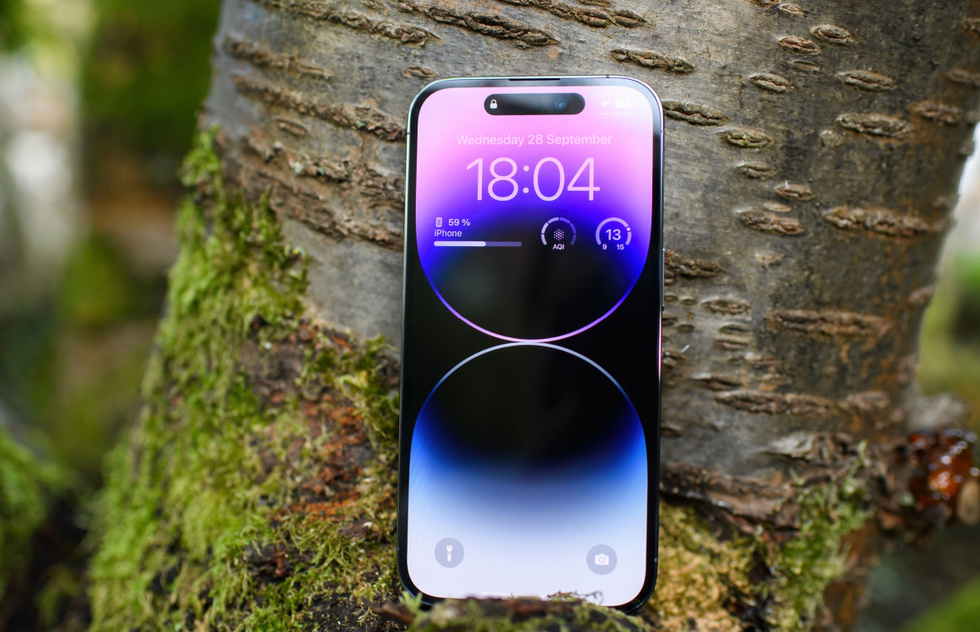Nowadays we tend to rely on our cell phones to get us out of any jam—getting lost, needing a ride, needing a distraction from the creeping existential dread that otherwise accompanies being human.
An unfortunate result of this is that we're often woefully unprepared when an emergency arises in an area with no cell or Wi-Fi coverage. What are you supposed to do, for instance, if you get injured or get turned around while backcountry hiking in the middle of nowhere? Talk about existential dread.
Apple has devised a solution for users of the company's recently released iPhone 14.
A new update to the Emergency SOS feature is designed to connect iPhone customers to emergency services via satellite when the phone is outside the range of cell towers and Wi-Fi networks.
Launched in the U.S. and Canada last month, Emergency SOS via satellite has now been expanded to four more countries: France, Germany, Ireland, and the U.K., with more places to follow next year, according to an Apple news release.
The service is free for everybody who has an iPhone 14 model (including the Plus, Pro, and Pro Max iterations) using iOS 16.1 or later.
Owners of earlier iPhones cannot use the satellite feature no matter what operating system they've downloaded. Only the iPhone 14 is equipped with the necessary "custom components and software that allow [the device] to connect to a satellite’s unique frequencies without a bulky antenna," according to the company's news release.
The Points Guy reports that the emergency satellite service should work for iPhone 14 owners in the six available countries even if the phone was purchased somewhere else where the feature hasn't launched yet.
If you got your iPhone 14 in Australia, in other words, you'll be able to send a satellite SOS if you go off the grid in Germany's Black Forest. A notable exception: The service will not be enabled for phones purchased in mainland China, Hong Kong, and Macau.
 (Credit: Apple)
(Credit: Apple)
Here's how Apple's Emergency SOS via satellite works:
When you dial the local emergency services number wherever you are—911 in the U.S. and Canada, 112 in continental Europe, 999 or 112 in the U.K. and Ireland—and your location does not have Wi-Fi or cell coverage, a message will appear alerting you that you have no connection but that you can try sending an emergency text via satellite.
Press the Emergency SOS button at the bottom of your screen and a brief questionnaire will appear that you answer by tapping replies describing the nature of your emergency ("Car or Vehicle Issue," "Sickness or Injury," "Lost or Trapped," and so on), roughly the number of people in danger, your surroundings (whether there's steep terrain or water involved, for example), and other pertinent info.
 (Credit: Apple)
(Credit: Apple)
The interface will guide you to where you should point your cell phone to connect with the satellite or whether you should turn left or right to get better reception. Expect messaging to go more slowly than you're used to; satellites are thousands of miles from Earth.
Your SOS will be sent to first responders, who will receive your questionnaire responses, location coordinates, iPhone battery level, and Medical ID (if you've enabled that feature on your phone).
Dispatchers should send follow-up messages back to you, also via satellite. You can text with them to provide more details.
Emergency services that don't accept texts will be contacted by "relay centers staffed by Apple-trained specialists who can call for help on the user’s behalf," per Apple.
You can also ask for your emergency contacts to be informed of your whereabouts. In fact, you can use the iPhone 14's satellite technology to send your location to trusted contacts even when you're not in trouble using the Find My app—just so they know where you are and that you're okay. You can run through a demo of the new satellite SOS feature and select your emergency contacts by going to the Emergency SOS settings on your device.
What about those of us who don't have an iPhone 14?
Unfortunately, those who venture into remote areas without satellite-enabled phones will have to continue preparing in advance the old-fashioned way. Carefully map your route in advance. Tell somebody where you'll be. Maybe learn how to use a compass.
Another way to make use of satellite technology—albeit in a far less sleek package—is by investing in a personal locator beacon (PLB) that can send a distress signal and transmit location info to rescue agencies without relying on cell coverage. We regret to inform you, however, that the device is indeed likely to have a bulky antenna.






